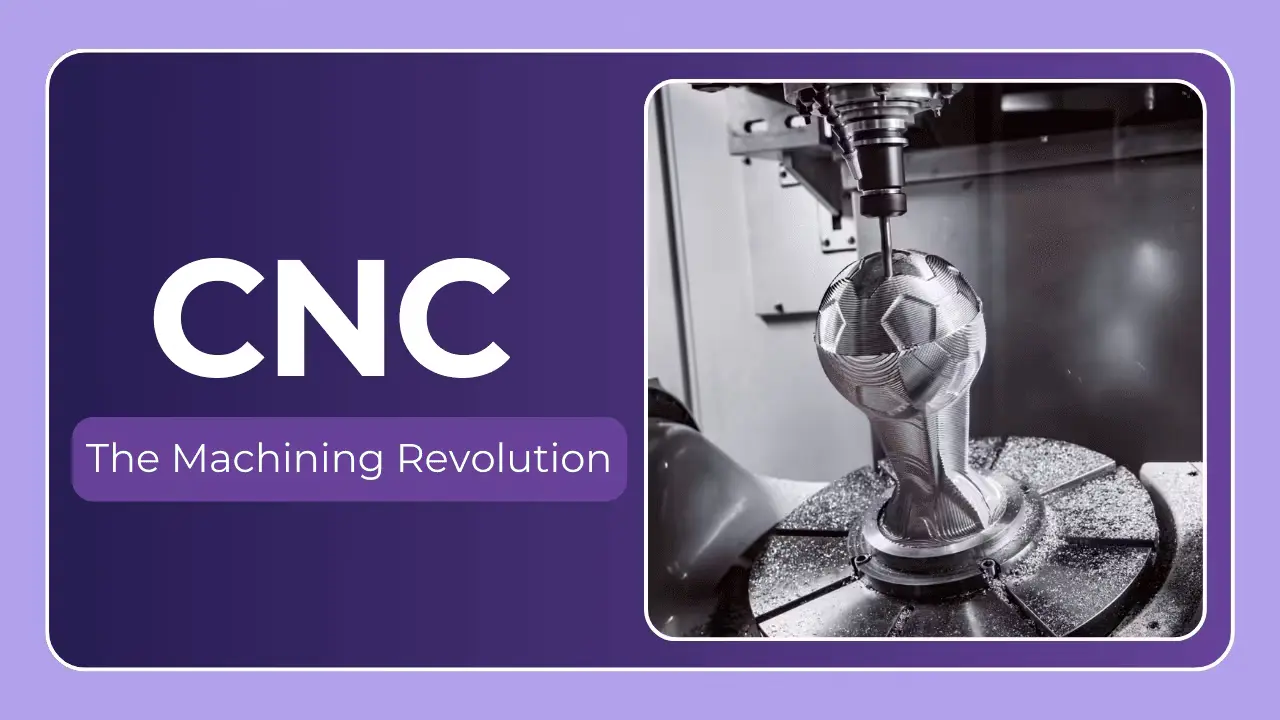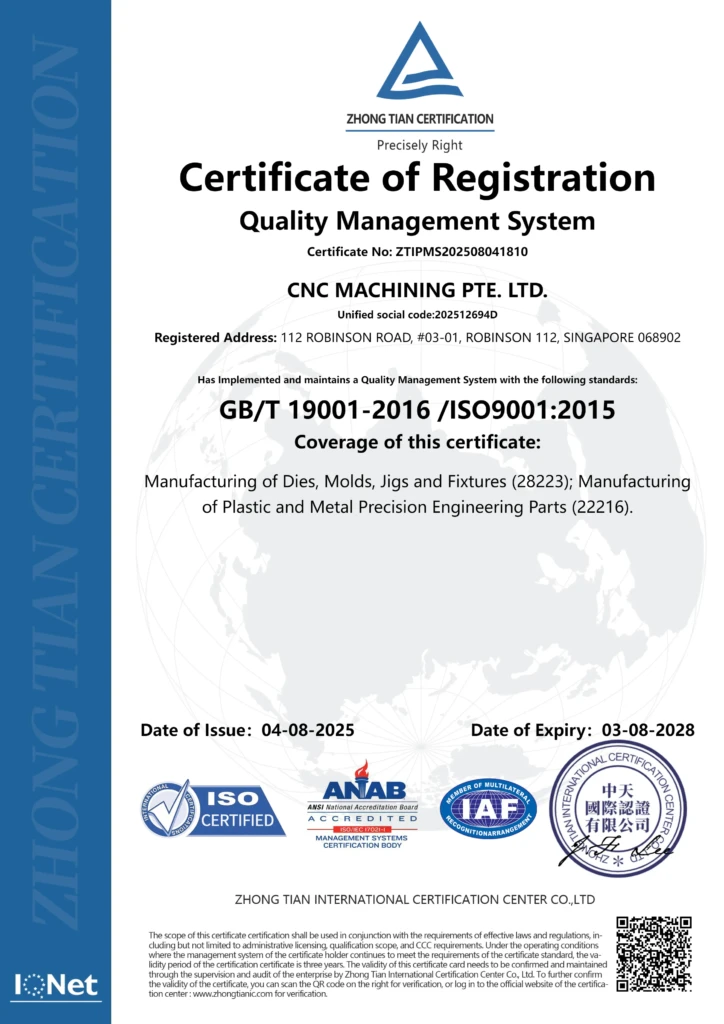Diving into the World of CNC Vertical Mills: A Comprehensive Guide
The landscape of manufacturing is constantly evolving, and at the heart of this evolution lies Computer Numerical Control (CNC) machining. Within the CNC realm, the vertical mill stands as a workhorse, a versatile machine capable of producing a vast array of parts with precision and efficiency. At CNC MACHINING PTE. LTD, a leading five-axis CNC machining manufacturer in Singapore, we see firsthand the power and potential of these machines daily. This article will delve into the basics of CNC vertical mills, covering their components, operation, applications, and what to consider when choosing one – or, more importantly, a CNC machining partner who utilizes them effectively.
What is a CNC Vertical Mill?
Simply put, a CNC vertical mill is a cutting machine controlled by a computer. Unlike manual mills where an operator directly controls the cutting tool, a CNC mill executes pre-programmed instructions (G-code) to remove material from a workpiece. The “vertical” designation refers to the orientation of the spindle – it moves vertically, while the workpiece is typically mounted on a table that moves in X and Y axes. This configuration is ideal for a wide range of machining operations.
Key Components of a CNC Vertical Mill
Understanding the components is crucial to grasping how a vertical mill functions. Here’s a breakdown of the essential parts:
- Machine Base & Column: Provides the structural foundation and rigidity for the entire machine. A robust base minimizes vibration, critical for precision.
- Spindle: The rotating part that holds the cutting tool. Spindle speed (RPM) is a key parameter influencing cutting performance. Modern spindles often feature automatic tool changers (ATC).
- X, Y, and Z Axes: These linear axes define the movement of the cutting tool or the workpiece. X and Y control movement across the table, while Z controls vertical movement.
- Table: The surface where the workpiece is secured. Tables can be manually or automatically positioned. Larger tables accommodate larger workpieces.
- Control System: The “brain” of the machine. This is the computer and software that interprets the G-code and controls the machine’s movements. Fanuc, Siemens, and Haas are common control system manufacturers.
- Tool Changer (ATC): Allows for automatic swapping of cutting tools during a machining cycle, significantly reducing cycle times.
- Coolant System: Circulates coolant (typically a water-based fluid) to lubricate the cutting tool, remove heat, and flush away chips.
- Enclosure: A safety feature that contains chips and coolant, protecting the operator and surrounding environment.
How Does a CNC Vertical Mill Work? The Machining Process
The process begins with a CAD (Computer-Aided Design) model of the desired part. This model is then translated into a CAM (Computer-Aided Manufacturing) program. The CAM software generates the G-code, a language the CNC mill understands. Here’s a simplified breakdown:
- CAD Modeling: Creating the 3D design of the part.
- CAM Programming: Defining the machining strategy – toolpaths, cutting speeds, feed rates, and depths of cut.
- G-Code Generation: The CAM software converts the machining strategy into G-code.
- Machine Setup: The workpiece is securely clamped onto the table, and the appropriate cutting tool is loaded into the spindle.
- Program Execution: The G-code program is loaded into the CNC control system, and the machine begins to execute the instructions.
- Material Removal: The spindle rotates the cutting tool, and the axes move the tool (or table) to remove material according to the programmed toolpaths.
- Finishing & Inspection: Once the machining is complete, the part may undergo finishing operations (deburring, polishing) and rigorous inspection to ensure it meets specifications.
Common Machining Operations Performed on a CNC Vertical Mill
The versatility of a CNC vertical mill allows for a wide range of machining operations:
- Face Milling: Creating a flat surface on a workpiece.
- End Milling: Cutting slots, pockets, and contours.
- Drilling: Creating holes.
- Tapping: Creating threaded holes.
- Profiling: Cutting complex shapes and outlines.
- Pocketing: Removing material from enclosed areas.
- Contouring: Cutting along a defined path to create a specific shape.
Materials Commonly Machined
CNC vertical mills can handle a diverse range of materials, including:
- Aluminum: Lightweight and easy to machine.
- Steel: Strong and durable, requiring more robust cutting tools and parameters. (Stainless Steel, Alloy Steel, Carbon Steel)
- Titanium: High strength-to-weight ratio, but challenging to machine.
- Plastics: Various types of plastics, each with unique machining characteristics. (ABS, Acrylic, Delrin)
- Brass & Copper: Good conductivity and machinability.
Parameters to Consider for Optimal Machining
Achieving optimal results requires careful consideration of machining parameters. Here’s a table outlining key parameters and their impact:
| Parameter | Description | Impact |
|---|---|---|
| Spindle Speed (RPM) | Rotational speed of the cutting tool | Higher RPM for softer materials, lower RPM for harder materials. |
| Feed Rate (mm/min) | Speed at which the tool moves through material | Faster feed rates for softer materials, slower for harder materials. |
| Depth of Cut (mm) | Amount of material removed per pass | Smaller depths of cut for harder materials and intricate features. |
| Cutting Tool Material | Carbide, High-Speed Steel (HSS), etc. | Material selection based on workpiece material and machining operation. |
| Coolant Type | Water-based, Oil-based, Air | Lubrication, heat dissipation, chip removal. |
| Cutting Fluid Pressure | Pressure of coolant delivery | Affects cooling and chip evacuation. |
Choosing a CNC Vertical Mill (or a Machining Partner)
Selecting the right CNC vertical mill – or, more realistically, a capable machining partner – depends on your specific needs. Consider these factors:
- Part Size & Complexity: Larger parts require larger tables and more powerful spindles. Complex geometries demand machines with more axes (e.g., five-axis machining).
- Material Type: Different materials require different spindle power, tool materials, and cutting parameters.
- Production Volume: High-volume production benefits from machines with automatic tool changers and efficient chip management systems.
- Accuracy & Precision Requirements: Higher precision demands machines with tighter tolerances and advanced control systems.
- Budget: CNC vertical mills range in price from tens of thousands to hundreds of thousands of dollars.
Conclusion: Leveraging the Power of CNC Vertical Milling
CNC vertical mills are indispensable tools in modern manufacturing, offering precision, efficiency, and versatility. Understanding their components, operation, and capabilities is crucial for anyone involved in product development or manufacturing. However, mastering these machines requires significant expertise and investment.
That’s where a trusted CNC machining partner like CNC MACHINING PTE. LTD comes in. We offer comprehensive CNC machining services, including five-axis machining, utilizing state-of-the-art equipment and a team of highly skilled engineers. We handle everything from prototyping to high-volume production, providing one-stop post-processing and finishing services. We can quickly customize and process most materials to your exact specifications.
Don’t just buy a machine; partner with experts who can unlock its full potential. Customize your precision parts now at the best price! Contact CNC MACHINING PTE. LTD today to discuss your project and experience the difference that precision engineering can make.




